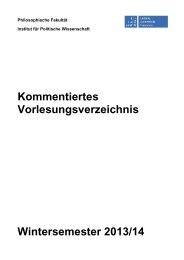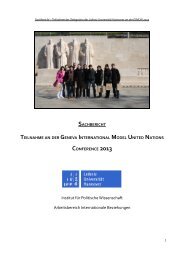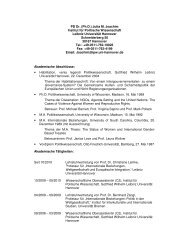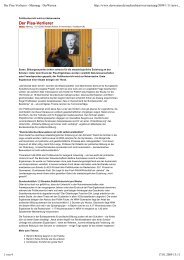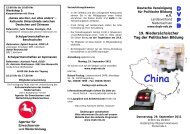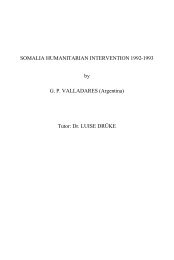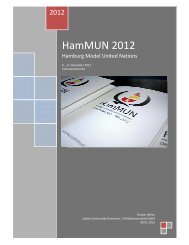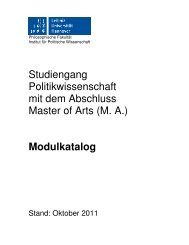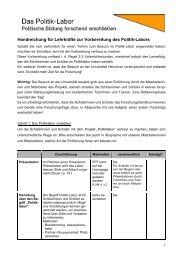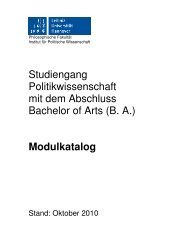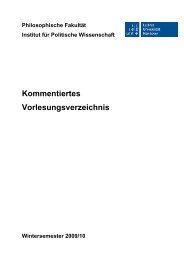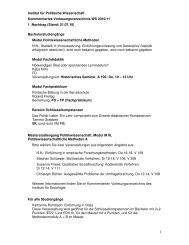Preventive Action for Refugee Producing Situations
Preventive Action for Refugee Producing Situations
Preventive Action for Refugee Producing Situations
Create successful ePaper yourself
Turn your PDF publications into a flip-book with our unique Google optimized e-Paper software.
112 Chapter 3<br />
World Relief staff as well, through life-threatening harassments, kidnapping,<br />
and <strong>for</strong>ced recruitment. 251<br />
Military construction and U.S. armed attacks continued to advance, and<br />
several human rights violations were committed by both Nicaraguan<br />
governmental <strong>for</strong>ces and armed indigenous groups. 252 The events of early<br />
1986 that led to the last major influx of Nicaraguan Indians into Honduras<br />
may be seen to some extent as a culmination of abuses of the indigenous<br />
Nicaraguan population. The three principal factors that led to that last large<br />
flow were "induced" asylum, <strong>for</strong>ced recruitment, and prevention of<br />
voluntary repatriation, each of which we will consider in turn below.<br />
UNHCR in the Mosquitia<br />
<strong>Refugee</strong>-producing situations such as that in the Mosquitia, which seem to<br />
be increasing in countries of the developing world, pose new challenges to<br />
UNHCR's function of international protection. In these new situa-<br />
___________________<br />
251 Molieri, [El Desafio Indígena], p.274. Molieri stales that in reality Mocoron, and<br />
thereafter the refugee camps in Tapamlaya, Rio Patuca, Cocobila, Usibila y<br />
Srumlaya that were attended by UNHCR and the Noithamerican Protestant organization<br />
World Relief, were trans<strong>for</strong>med in places of recruitment by the followers<br />
of Steadman Fagotti. For their recruitment they used various mechanisms, money,<br />
coercion and threat to the families, to kidnapping of the young men, and secret<br />
training camps <strong>for</strong> making them to attack Nicaraguan positions. This work was facilitated<br />
by the Moravian pastors, who originally had belonged to the MISURA-S<br />
ATA (translated by the author).<br />
252 Americas Watch has prepared key documents on the Human Rights situation in<br />
the Atlantic Coast. See especially Human Rights in Nicaragua: Reagan, Rhetoric,<br />
and Reality (1985), which notes that of the two most serious incidents attributed<br />
to the Nicaraguan governmental <strong>for</strong>ces, "There is no evidence that they were<br />
directed or condoned by the central government ...There has never been any<br />
evidence of radically motivated or widespread killings of Miskitos." See also<br />
Violations of the Laws of War by Both Sides in Nicaragua, 1981-1985 (1985) and<br />
(1987), and Miskitos in Nicaragua: 1981-1984 (1984). Another important<br />
document is Trabil Nani: Historical Background and Current Situation on the<br />
Atlantic Coast of Nicaragua, issued by the Center <strong>for</strong> Research and<br />
Documentation of the Atlantic Coast and the Riverside Church Disarmament<br />
Project See also Diskin et at, "Peace and Autonomy on the Atlantic Coast of<br />
Nicaragua: A Report of the LAS A Task Force on Human Rights and Academic<br />
Freedom," LASA Forum 16 (Spring 1986) and LASA FORUM, 17 (Summer<br />
1986), pp. 13-24, and Richard Fagan, Forging Peace. The Challenge of Central<br />
America, Policy Alternatives <strong>for</strong> the Caribbean and Central America, Basil<br />
Blackwell, New York, 1987, p. 65.<br />
Analytical Discussion 113<br />
tions national authorities either have lost or are losing the confidence of a<br />
segment of their citizens, or have become unable to provide them with protection<br />
against abuses by rebel <strong>for</strong>ces.<br />
International law clearly provides that "everyone has the right to freedom of<br />
movement and residence within the borders of each state. Everyone has the right<br />
to leave any country, including his own, and to return to his country." 253 When<br />
national authorities run into difficulties in en<strong>for</strong>cing those rights <strong>for</strong> their own<br />
citizens, however, then the United Nations must do everything it can to<br />
guarantee these rights.<br />
UNHCR noted with unease the growing political and military unrest in the<br />
Mosquitia and became increasingly concerned <strong>for</strong> the well-being of the<br />
indigenous populations flowing into Honduras. Moving cautiously, UNHCR set<br />
up a program in the Honduran Mosquitia, primarily <strong>for</strong> protection purposes. The<br />
Office built up a small team of officials in the Mosquitia, but due to serious<br />
protection problems it was soon <strong>for</strong>ced to increase its staff there.<br />
Protecting the displaced Nicaraguan Indians became a sensitive and delicate<br />
mission. <strong>Refugee</strong> ef<strong>for</strong>ts were trans<strong>for</strong>med, through the support of the Honduran<br />
Armed Forces and the influence of the U.S. Embassy, into counterrevolutionary<br />
activities. The wife of the American Ambassador in Tegucigalpa, Diana<br />
Negroponte, played a conspicuously active role in refugee affairs; in 1982 she<br />
was listed as a World Relief staff member. 254<br />
It was almost impossible to maintain a correct count on the refugees,<br />
because their constant migration made an accurate census difficult. People<br />
seemed to be on the move all the time between villages, or between the<br />
villages and the border area on the Honduran side, either of their own accord<br />
or as a result of coercion by MISURA groups. The fluctuations in the refugee<br />
population are reflected in the official UNHCR statistics, which, even despite<br />
the 1986 influx, had fallen again by the end of 1986 to earlier levels. 255 This<br />
happened largely because these "new" refugees,<br />
_____________________<br />
253 Article 13 of the Declaration of Human Rights. See also Article 11 of the International<br />
Covenant on Civil and Political Rights.<br />
254 Molieri, El Desafio Indigena, pp. 276.<br />
255 The Numbers of Nicaraguan Miskito and Sumo Indians under UNHCR care and<br />
maintenance in Honduras have been as follows:<br />
December 31,1983: 13,767<br />
December 31,1984: 15,477<br />
December 31,1985: 12,095 June 30,1986:17,731<br />
December 31,1986: 15,857



